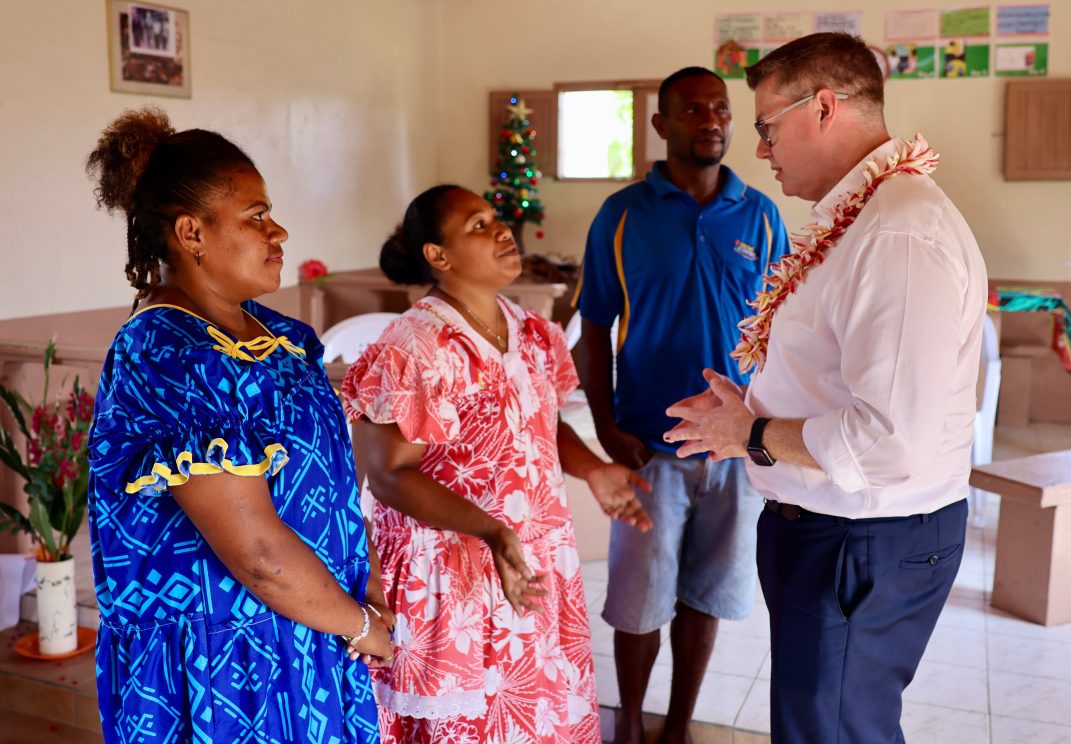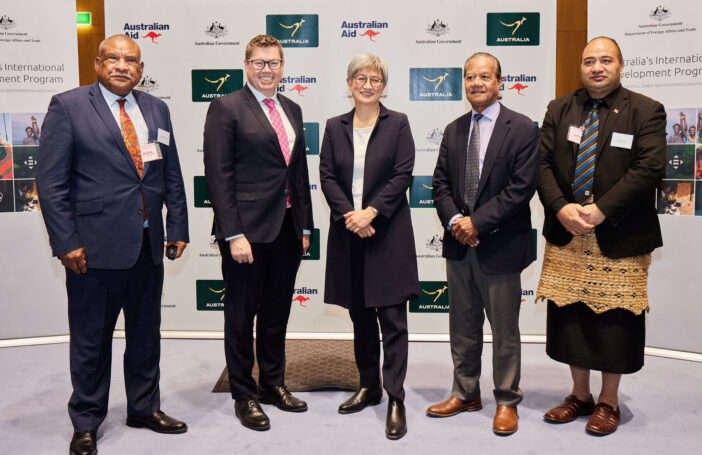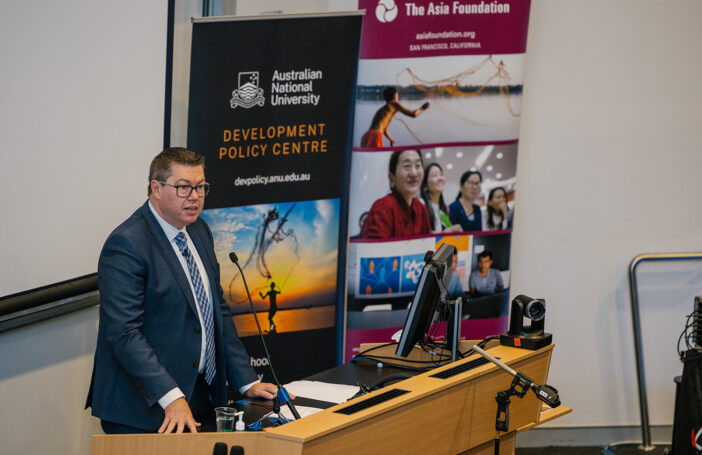When security experts are offering advice to the Australian government on how to do development in the Pacific, you know that winds are changing. Couple that with Pat Conroy’s declaration that he wants development to take over DFAT and there’s no doubt: development is having a renaissance in Canberra.
But what’s a policymaker to do? The demand for change is loud, and no longer coming from just one direction – but there are finite resources, a lot of stakeholders itching for change, a decade of capability declines to reverse, and the bureaucratic ship is a slow one to turn around.
Late last year the Development Intelligence Lab asked more than 50 of Australia’s best development and foreign policy thinkers, and over 50 experts from the region who are involved with (or delivering directly) Australian aid projects, what they think when it comes to the toughest questions facing the DFAT team charged with drafting the new policy.
Seven surveys and five regional consultation meetings later, the Lab published its Pulse Check report. It identifies the five big challenges – climate and the environment; geopolitics and China; governance, state capability, and democratic decline; locally led development; and DFAT capability – that the government would be mad not to put renewed and significant weight behind. These challenges are critical to development impact, and our current response is no longer fit for purpose.
Climate change was named by experts as the most significant factor that will shape development in the Indo-Pacific. Action here was seen as the second-highest indicator of development progress, and it was seen as critical to genuine partnerships for the Australian government.
That said, experts saw that Australia is known for our inaction on climate change, and our regional experts in particular pointed to Australia’s domestic policies on climate as undermining valuable relationships.
Experts overwhelmingly recognised that geopolitical shifts, particularly as they relate to China, are impacting the region and development delivery and outcomes. What experts think China might do in the region, what it is actually doing in the region, how we navigate increased interest in the region from other major players amid a shifting global order, unstable economics, and technological advances all add up to a megatrend that’s already disrupting and shaping development in the region.
However, experts were entirely unconvinced by Australia’s approach to date. Some doubted that the ways Australia has attempted to tackle the issue have been correct or effective, while others argued that the development program shouldn’t be the mechanism to do this at all. Instead, many experts identified alternative pathways, including determining what our comparative advantages are and playing to those.
Experts sounded the alarm on the state of governance and democratic decline in the region. We were surprised at how frequently this emerged across the survey. Our cohorts were clear-eyed that the health of the governance ecosystem is tightly linked to a wide range of other development challenges.
But, unlike other challenges, experts didn’t see our governance efforts as something we have done badly or inadequately to date. They were, however, resounding in wanting to see an uptick in efforts across the development program to meet the growing concern. Such work may not win us friends with political elites, but it could provide sure footing to back other development aspirations.
The critical nature of the need to shift towards more and better locally led development came through loud and clear in nearly every element of the survey, for three big reasons. First, it was the strongest message we heard from our regional experts. Experts highlighted that localisation includes both “listening more to the recipient of the support”, as well as “involving and engaging more locals in delivering projects”. Second, experts identified locally led development as a key indicator of development progress in the region – Australia can’t be an effective partner without this. Third, they saw it as critical to achieving the government’s commitment to genuine development partnerships.
So, are we doing this well? Our experts met this question with a resounding “no”: it was identified as one of our biggest weaknesses, and a top area for increased action.
The idea that DFAT needs to rebuild its development capability is not a new one. But the extent to which this theme dominated the Pulse Check was surprising. We asked a specific question on capability, but also saw it raised by the experts in six other questions.
While there are some positive elements of existing DFAT capability that should be maintained (a level of flexibility, a commitment to quality), there’s a lot of work to be done. DFAT expertise, strategic direction, adaptability, transparency, resourcing, and more, need serious work. The Australia-based cohort saw Australia’s development capability shortcomings as some of our biggest weaknesses, undermining our partnerships and relationships and preventing a culture of accountable development cooperation.
So, what’s a policymaker to do? We see three options. First, government could try to please all its stakeholders and carry on as usual, albeit doing slightly better. Second, it could stabilise the program, pick a few big bets and do the foundational work to get ready for what’s ahead. Or third, it could go big and take this moment to be the leader and partner we’d love it to be.
Based on the Pulse Check’s results, my Lab colleagues and I think the middle road is practical for now, although we have a few riders – you can explore them in full in the Lab’s take on the Pulse Check results. Two that stand out are: a need to resolve the question of national interest (see the Lab’s Review of Reviews for more on this), and acknowledgement that not everything can be done.
We need to make change where it counts – and our experts have given us the list, starting with climate change and locally led development.
Note: The Pulse Check involved responses from more than 100 development experts and practitioners in Australia and the region across multiple surveys. A full list of contributors can be found on the Lab’s website. The analysis team behind the final report was Madeleine Flint, Isabelle Coleman, Luke Levett Minihan, Bridi Rice and Richard Moore.





DFAT strategic directions
What drives shifts in the strategic goals for development assistance is a complex issue that, partially, depends on personal assessments of motives and incentives. One might argue, for example, that the rise of “aid for trade” is a defensive strategy employed by development agencies to protect their budgets from politicians. That is not to “blame” politicians, who are elected representatives balancing priorities connected, however loosely, to the preferences of voters. In these more tense global times therefore, spending on defences increases and development assistance in seen, and justified, more as a tool of “soft power” than it is as a way to eradicate absolute poverty or for other countries to share the individual freedoms that we enjoy. Consequently, and understandably, the volume and content of development assistance is the result of incorporating various different reasons for spending Australian tax payers money overseas.
Feeding into the debate about how and how much to spend on development assistance are perceptions about its effectiveness. Given whatever goals, what are the returns on the investment? This question can never be answered with precision, which is frustrating, and doubly so because the private sector operates with one clear absolute key performance indicator: profit. There is no equivalent for development assistance, which leads to Sisyphean angst to justify expenditures.
Thanks Adam
Especially for mentioning perceptions of aid effectiveness. Which could – or should – be regularly reported in the Annual Performance Report required under the PGPA Act. Where you then have to follow-up on the Annual Report.
DFAT also asserts: “Evaluations play an important role within the development performance framework to support a high quality development assistance program”. https://www.dfat.gov.au/development/performance-assessment/development-evaluation.
But then makes it extremely difficult to check its own evaluations, by what seems nearly to be random indexing, but is by the first letter of the first name of the Report: https://www.dfat.gov.au/development/performance-assessment/development-evaluation/program-evaluations#p
Without even regularly mentioning the year in the title. For the currency and regularity of conducting those evaluations.
Thanks for this analysis, Madeleine.
However, one political issue that always seems missing in the aid debate(s) is explicit support by the Foreign Minister for the results of our aid program. And regularly highlighting the positive outcomes.
Not the “in principle” statements of the obvious, so beloved of politicians.
Not trumpeting the annual dollar amounts in the aid budget.
Especially – not going along to a recipient country and announcing the commencement of an Australian aid project. With many coloured pictures.
The public debate about the merits of aid has moved on (slightly) from the “all aid is wasted” nonsense. But Foreign Ministers and not the “Minister for International Development” need – regularly – to publicise why aid is necessary, useful and achieves the reduction poverty in a recipient country.
In my 36 years of lobbying on the benefits of Australia’s aid, I have never heard a Minister say that.